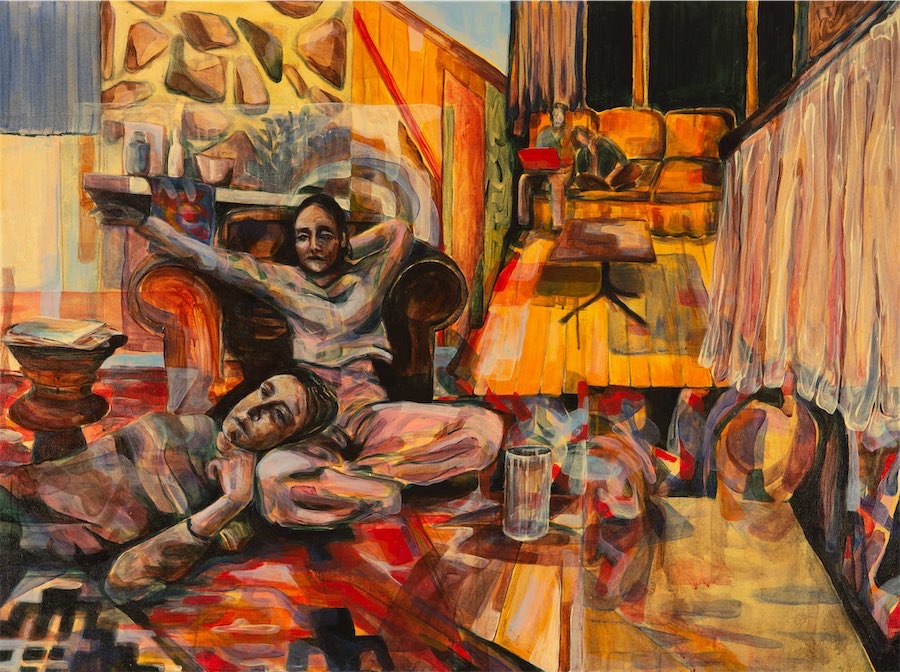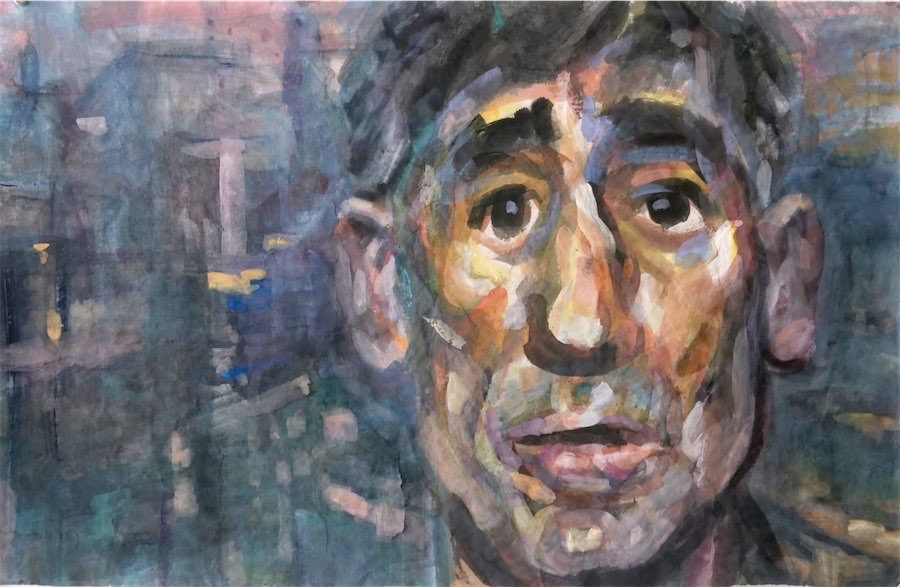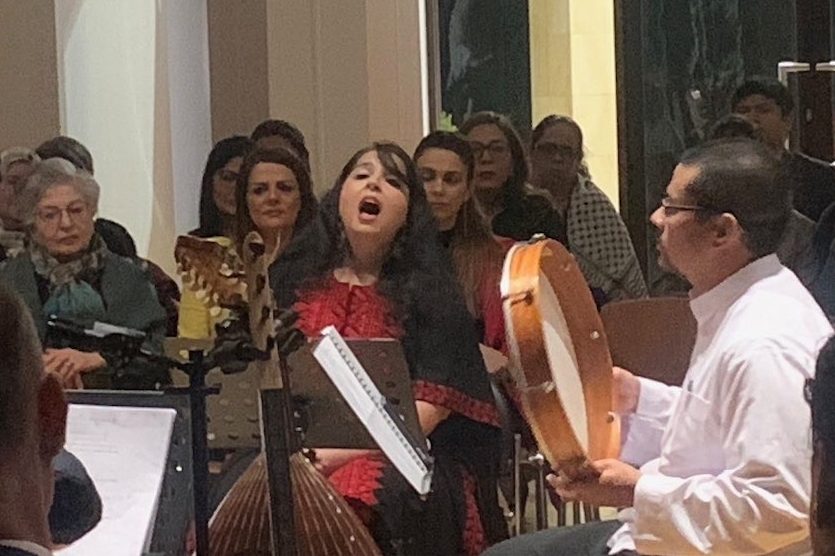THE Canberra lockdown has delayed prize announcements for the inaugural annual National Capital Art Prize, but over at Aarwun Gallery in Gold Creek, it sounds as if excitement is still high.
During frequent phone calls to the prize’s founder, Robert Stephens, the sounds of voices, banging and hammering could be heard and as he declared a few days ago: “You wouldn’t recognise the gallery,” which, with a field of 127 finalists, is packed to the rafters.
One thing Stephens is particularly proud of is the number of ACT artists shortlisted – 16 of them, with veteran landscape painter Sandra House chalking up two shortlisted entries and Claire Shepherd Primrose, who is defined as ACT/NSW, also chalking up two.
There are also regional artists on the list who are often identified as Canberran, including Kerry McInnis, of Bungendore.
With 46 finalists from NSW, 21 from Victoria, 12 from WA, 10 from Queensland, 8 from the NT, 6 from SA and 3 from Tasmania it tends to confirm the impression that Canberra artists punch above their weight, but, of course, statistics will never be able to predict the outcome.
Judges are critic and author Sasha Grishin; Justice John Sackar; artist and former head of the National Art School, Bernard Ollis; indigenous artist-teacher, Lynnice Church; NGA curator Peter Johnson; head of the ANU School of Art & Design, Rebekah Davis and director of CMAG, Sarah Schmidt.
After getting the numbers down from more than 1000 submissions, their task is now to judge shortlisted artworks for a second time to decide the four category winners – “Open”, “First Nations Prize for Indigenous and Torres Strait Islander Artists”, “Landscape” and “Student”.
The prize pool of $45,000 includes $15,000 each for Open and First Nations artworks, a $5000 landscape prize, a $2500 People’s Choice Award and an art scholarship valued at $5000 available to current ANU students.
While Stephens has spoken of the devastating impact of covid on the arts sector, his vision for what he sees as an ongoing prize is an idealistic one – to promote culturally diverse artistic endeavours, showcase Australian artists, support the artistic endeavours of young people and provide a forum where art can be viewed, studied, critiqued and sold.
All shortlisted works can be viewed at nationalcapitalartprize.com.au
Painters’ thoughts
Artists entering the prize were asked to submit an artist’s statement.
Here are some thoughts of the ACT’s painters.

Samantha Corbett’s painting “We All Waited for It to Pass” explores the moments of intimacy and distance that characterise this technological age. Digital imagery from her social media circles became a creative entry into painting to develop an aesthetic that speaks to the oscillation between figuration and abstraction, imagery and feeling.

Blake Edwards writes of his work “Pipuwakirri”, that after visiting the National Gallery and Albert Namatjira’s works he immediately connected with his depictions of a pastoralist landscape of his country.
“Halfway between First Nation Australians and the Sami in Norway”, he explains, his work shares the theme of modern international cultural exchange.
Helen Goodwin’s image, “Gibraltar”, was created from her experience of Gibraltar Falls looking out into the landscape to capture the transition of light moving across forms. She has previously studied and worked in the fashion industry as a textile designer.

For more than 45 years Sandra House has painted predominately in oils, and is known for her paintings of the bush and Canberra surrounds. She says of “From William Hovell Drive”: “I travel down this road all the time, especially in the early morning”. Her second shortlisted work, “In the Brindabellas”, was, she says, created to show one of her favourite places.
Solomon Karmel-Shann’s “Still Life” explores the effects of placing a figure in a still life. The resulting dynamism is stark – the feelings of the young man, the notion of journeys and darkness of the unknown. She is a 24-year-old painter who is interested in how strange, unexpected and invisible things are a part of our world.

Jack Mather’s portrait “Autumn’s Falling” is based on the theme of autumn and the falling of leaves in the landscape. However, it is the subject that is falling, through the bright colours of autumn not the leaves. “I am a visionary artist and creative,” he says.
In creating “Hear the Music”, Joan McKay, a wildlife carer, used a scalpel, tattoo needles, microfibre pen and an engraving pen to scratch several layers into the Ampersand Scratchboard to depict Mallee and Pebbles, two red-necked wallaby joeys, aiming to capture their personalities, their sense of play, and their excitement.
Thet Naing’s landscape oil painting, “Autumn Bliss” highlights autumn in Canberra, especially the beauty of Lake Ginninderra created by changing seasons.

Varvara Naumova studied art at the Abramtsevo industrial arts college in Moscow before moving to Canberra in 2015. “Between Day and Night” was inspired by a spectacular sunset which appeared over the Brindabellas. There are always real stories in her artworks, hidden behind metaphors – visual poetry, she says.
Crystal Prior, whose work “Divergent Reflection” is in the student section, says: “Looking for an unorthodox way to capture my self-portrait, I caught my reflection in a spoon while I was drinking my tea and thought this would push the boundaries of my vanity.” Also, an accomplished textile artist, she has constructed quilts.

Artist-curator Claire Shepherd Primrose’s two paintings, “Peripheral Vision” and “Beyond Where We Are”, recreate surfaces, textures and colours evocative of particular places; each work attempting to re-collect layers of the place at once of and from memory melded with specific gatherings.
“Lucy’s Dreams” by Alice Pulvers is a portrait of her youngest sister and fellow artist, Lucy Pulvers. The darkness surrounding Lucy and the random scattering of elements suggests a dream-like reverie. Educated in Japanese schools until she moved to Australia in 2000, Pulvers’ work strongly reflects her early life in Japan and in her compositions she overlays many layers of colour and pattern.
Annette Rennie’s landscape painting, “Dusty Delivery” depicts a load on a hot, dusty day, and asks: “Will this heavy load make delivery time?” “The cloud of yellow dust against the blue sky and grey red road drew me to this scene. I liked it so much I painted it three times,” she says.

“Winter Awakening – Kamberri 1820″ by Andrew Smith depicts the time many indigenous mobs and clan groups gathered to talk and trade in Kamberri. Throsby recorded many indigenous family groups around the rivers and foothills, hunting the grassy plains, fishing, and harvesting yam daisies, seeds and berries from the land.
As a keen bushwalker, Smith says: “The science of capturing colour and light inspires me and when colour, light and emotion come together, you know you have a good painting.”
Janet Thatcher’s artwork “Hear Us” uses realism to lead the viewer on a unique and emotional journey. Passion, love and a life-long affinity with animals is what motivates her photo-realistic works in pastel and velour.

Henry Xuning originally studied at the Central Academy of Arts and Crafts in China. In “The Pandemic” he suggests: “Maybe we are still keeping the surface calm, but my paintbrush accidentally touched our inner panic and anxiety.”
Who can be trusted?
In a world of spin and confusion, there’s never been a more important time to support independent journalism in Canberra.
If you trust our work online and want to enforce the power of independent voices, I invite you to make a small contribution.
Every dollar of support is invested back into our journalism to help keep citynews.com.au strong and free.
Thank you,
Ian Meikle, editor












Leave a Reply